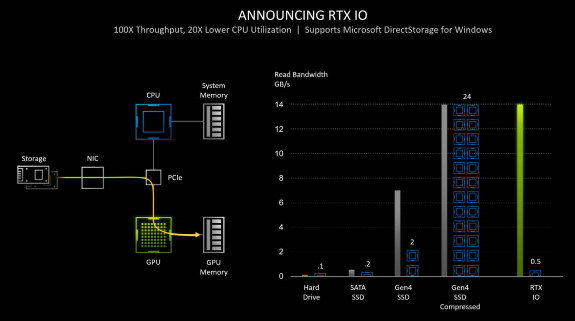
Microsoft aims to solve this with its new DirectStorage API but NVIDIA thinks it can do it better by cutting out the middle man and offloading the I/O to its GPU cores via a new technology called RTX IO. According to NVIDIA, new SSDs like the Samsung 980 Pro SSD with 7GB/s bandwidth can already require the full utilization of two CPU cores and it will only get much worse as SSDs get even faster.
In a new article The Tech Report explains what RTX IO is and how this GPU technology can resolve this bottleneck. At the moment, it's unknown whether RTX IO only works with the new RTX 30 series cards and whether it also offers benefits for PCI Express 3.0 SSDs.
Overall, RTX IO and Microsoft's DirectStorage promise to be a significant benefit for gamers. Similar technology is used by the PlayStation 5 and Xbox Series X consoles and it will result in shorter game load times, a reduction in game size (thanks to being able to use heavier compression), better frame rates, and reduced texture pop-in and game stuttering.
For those of us with brand new systems, we’ll likely see improvements from RTX IO and DirectStorage immediately. The improvements will only continue, though, as developers start expecting that decompression hardware to be present on GPUs and can build games with it in mind. It seems likely, too, that a suite of other technologies and APIs will begin to accompany this. Developers could have an SSD-optimized installation for those with the hardware to do it, and a bulkier standard installation for the rest of us. It could be something we enable manually or it it could be automated.
